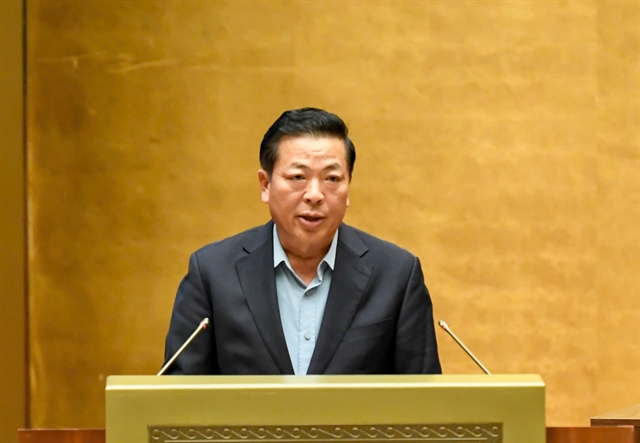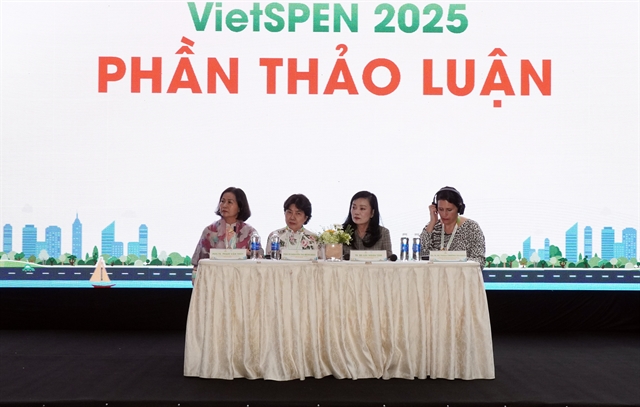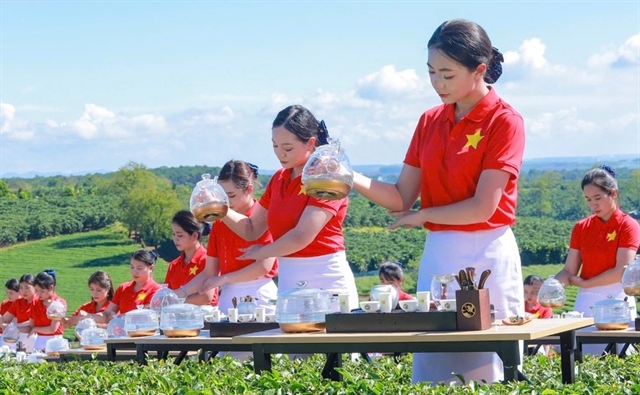 Life & Style
Life & Style
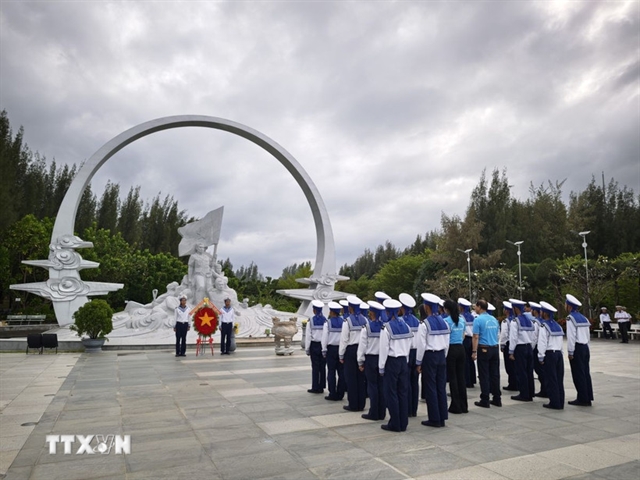

|
| Tugging ritual and games of Ninh Bình Province's Phú Hào Village. — VNA/VNS Photo Khánh Hòa |
HÀ NỘI — A decade after UNESCO recognised tug-of-war as an intangible cultural heritage of humanity, the tradition continues to thrive in Việt Nam, where communities have worked with notable dedication to keep it alive, according to Dr Lê Thị Minh Lý, deputy chairwoman of the Việt Nam Cultural Heritage Association.
The tugging rituals and games shared by Việt Nam, Cambodia, South Korea and the Philippines were inscribed on UNESCO’s Representative List of the Intangible Cultural Heritage of Humanity at a meeting of the Intergovernmental Committee for the Safeguarding of the Intangible Cultural Heritage in Namibia on December 2, 2015.
The listing was a significant moment for all four nations, but it has held particular meaning in Việt Nam, where it continues to inspire the communities that practise it.
Rooted in the rhythms of agricultural life, the rituals were shaped by farming communities who used them to express hopes for favourable weather and a plentiful harvest.
In Việt Nam, tug-of-war has long been woven into the fabric of communal life. Its continued performance today reflects not only cultural pride but also a shared sense of strength and unity, with each generation passing the tradition to the next.

|
| A ritual before the tug-of-war game of Tày people in Lào Cai Province's Bảo Nhai Commune, — VNA/VNS Photo Khánh Hòa |
After 10 years of UNESCO recognition, the communities practising the tug-of-war ritual in Hà Nội, as well as those in Bắc Ninh, Phú Thọ, Lào Cai, Hưng Yên, Ninh Bình and other provinces, have continued to preserve, promote and share the values of the heritage.
“Since the initial six communities were listed in the registry in 2015, four more communities have been discovered and researched, with proposals for their inclusion. Over the past ten years, the tug-of-war heritage community in Việt Nam has developed significantly, spreading its values, brand and positive impacts on life,” said Dr Lý.
Many localities practising the rituals and games have focused on educating the younger generation while actively connecting and exchanging experiences with each other, creating a living heritage network.
Particularly, the international connections between Việt Nam, South Korea, Cambodia and the Philippines have opened a wide cultural exchange space, linking communities and honouring the diversity of cultural identities. This fosters goodwill among ethnic groups and promotes peace, cooperation and sustainable development in the region.
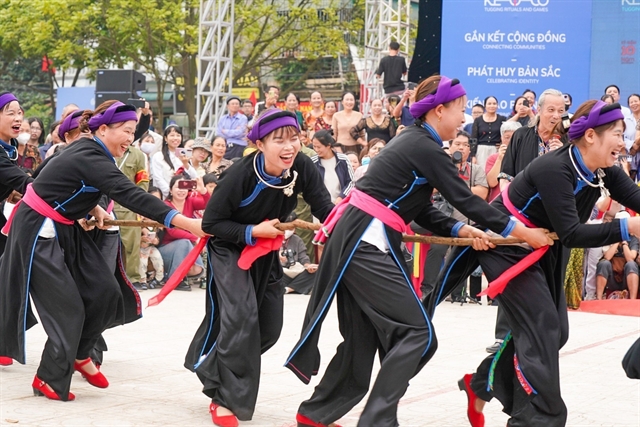
|
| Tug-of-war game of Tày people in Lào Cai Province's Bảo Nhai Commune. — VNA/VNS Photo Khánh Hòa |
The sitting tug-of-war community in Hà Nội’s Long Biên Ward has become a centre for successful connections among tug-of-war communities both domestically and internationally, thanks to the proactive guidance and support of local authorities, the Hà Nội Department of Culture and Sports, the Cultural Heritage Association of Việt Nam, and the Centre for Research and Promotion of Cultural Heritage (CCH).
According to the deputy chairwoman of the Việt Nam Cultural Heritage Association, the establishment of the Tug-of-War Heritage Community Network in Việt Nam is a prime example of the connection and sustainability of Vietnamese tug-of-war.
This network reflects the spirit of the 2003 UNESCO Convention on the Safeguarding of the Intangible Cultural Heritage, which promotes respect for cultural diversity, enhances dialogue among communities, and preserves intangible cultural heritage as a foundation for peace and sustainable development, she added.
“The ritual and game of sitting tug-of-war at Trấn Vũ Temple continue to be preserved, practised and strongly promoted by the community ten years after being honoured by UNESCO,” said Ngô Quang Khải, head of the Management Subcommittee of Trấn Vũ Temple in Hà Nội’s Long Biên Ward.
“This heritage is not only a source of pride for the people of Long Biên but also a living testament to the spirit of 'living heritage,' where the community serves as the guardian, creator, and transmitter of its values through generations.”

|
| Participants in sitting tug-of-war community in Hà Nội’s Long Biên Ward. — VNA/VNS Photo Khánh Hòa |
According to Nguyễn Mạnh Hà, secretary of the Long Biên Ward Party Committee, local authorities and residents have implemented many effective solutions to preserve and promote the heritage values.
These include restoring the rituals in traditional festivals, enhancing communication and promotion of the heritage through cultural and media activities, coordinating research and compiling scientific documentation, educating the younger generation and, in particular, protecting the cultural space and landscape of heritage sites associated with the tradition, such as Trấn Vũ Temple, Cự Linh Pagoda and Ngọc Trì Communal House.
"For the people of Long Biên, tug-of-war is not just a folk game but a sacred ritual linked to the deities that symbolise strength, compassion and the protection of nature. Each festival season, the game not only brings the sound of joy but also echoes the aspiration for flood control, praying for national peace and prosperity, favourable weather and bountiful harvests," said the secretary.
The tugging rituals and games were re-enacted at Trấn Vũ Temple on November 16, with the participation of tugging communities from Hà Nội, Phú Thọ, Ninh Bình and Hưng Yên.
Notably, the participation of representatives from tugging communities in South Korea, Cambodia and the Philippines brought a vibrant atmosphere of international exchange, reflecting the spirit of cooperation and the sharing of experiences in heritage preservation. — VNS
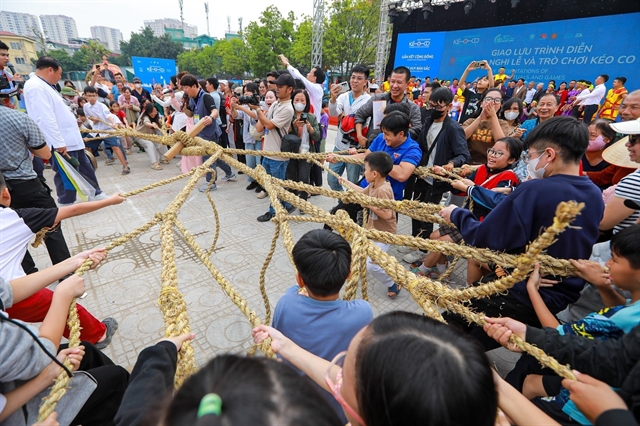
|
| Gijisi tug-of-war from Dangjin City, South Korea, is re-enacted at the event. — VNA/VNS Photo Khánh Hòa |
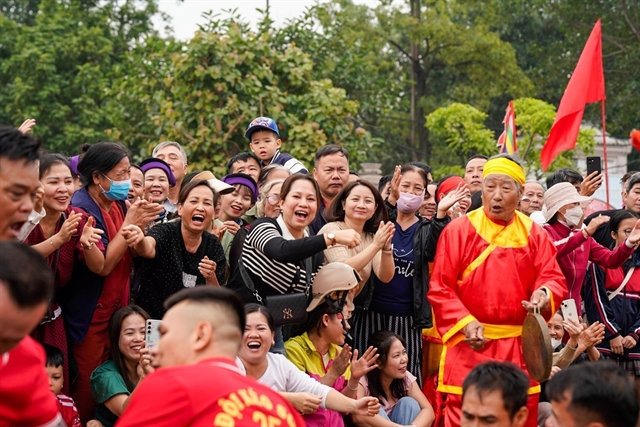
|
| Audience cheers while the competiions is taking place. — VNA/VNS Photo Khánh Hòa |


